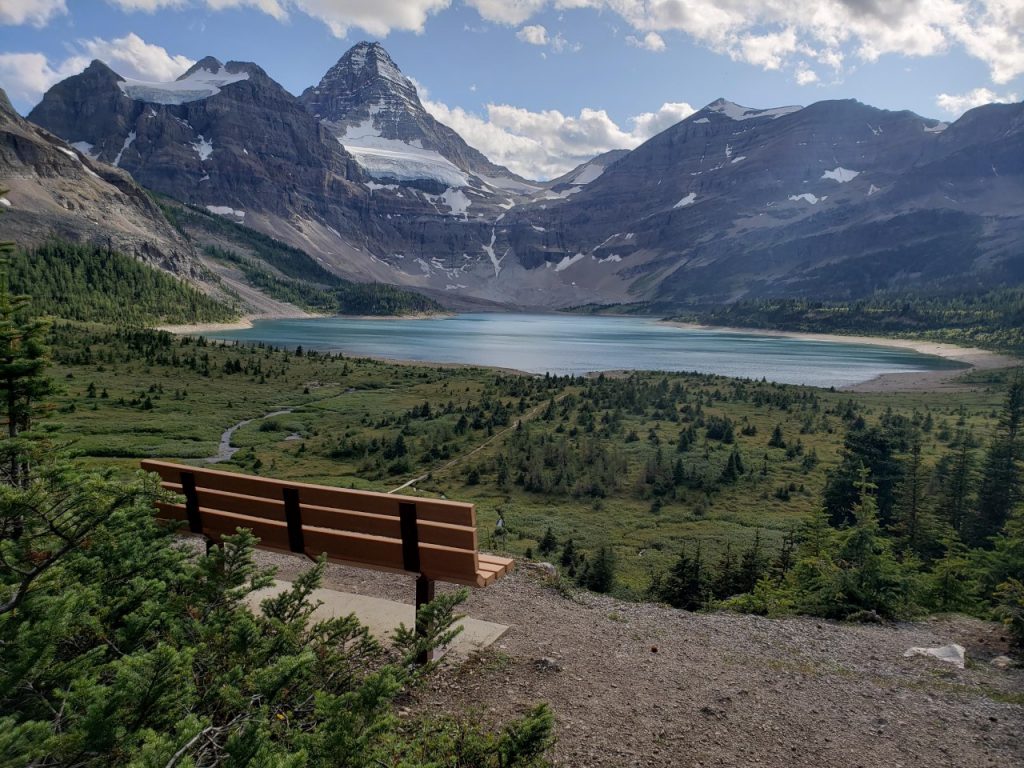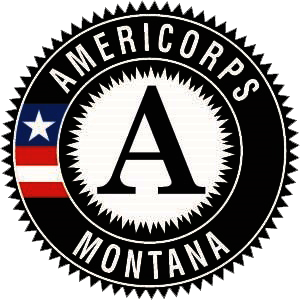By Jeremiah Eaton
Spring is here in West Glacier, and it couldn’t have come soon enough. The snow has all melted at lower elevations, providing a brilliant contrast of snowcapped peaks and vibrant forests. The flowers are all blossoming, and the birds and seasonal workers have returned from their wintering grounds. Everyone is beginning to prepare for the park’s eventual reopening. Glacier is finally awakening from its slumber, and the feeling is contagious. Hope is slowly beginning to fill the air, a drastic change of atmosphere from the last several months. People in my community are beginning to feel like they are getting back to their everyday lives, with a few more restrictions than normal.
Montana is beginning to open up again. The governor has announced a phased reopening plan, which eases Montana citizens back into normal life, whatever that means these days. The reopening of Montana means that Glacier will likely follow suit. This means millions of visitors will travel Glacier to see its magnificent beauty, and I can’t blame them. I often find myself in a different state of mind after exploring the park, something that I want others to get the chance to experience. Glacier’s grandeur has a unique ability to generate powerful emotions of awe, inspiration, and hope. All of those emotions are impactful in their own right, but for this blog I want to focus on one that sticks with me, hope. Hope is an emotion that has been in short supply recently, and for several reasons. First, the pandemic has shaken our view of the short-term future. Uncertainly fills the air. Second, climate change is an ever-present threat looming over all our ambitions and plans. It has shaken our view of the long-term future. Uncertainty fills the air again. People have a hard time holding onto hope when the future is uncertain, and there lies our current issue. Hope is the most needed at times when it is the hardest to come by and even harder to hang on to. However, it is an emotion that is meant for times of uncertainty, so much so that it actually requires it. Hope is defined as “a feeling of expectation and desire for a certain thing to happen.” This definition is built on the premise that the future is uncertain. We don’t know what is going to happen, yet we can still desire and work towards a certain outcome. Hope requires uncertainty, yet uncertainty stifles hope. What is the solution to this Catch 22?
The solution is to actively foster hope. The first step toward fostering hope is by accepting that the future is uncertain. We have to acknowledge that we don’t know what the short-term or long-term future looks like, and rid ourselves of any previous expectations. This allows us to approach the future with a blank slate. Then, using all the information we have, we can envision a desired, yet realistic, future. What would a desired future look like given the uncertainty of climate change and Covid-19? My desired, yet realistic, future is a shift in climate change and pandemic recognition and action. I hope that climate change can be a catalyst for collaboration between communities, states, and nations. I hope that Covid-19 will highlight the positive and negative aspects of our current systems. I hope that it encourages people to seek healthcare reform, economic innovation, expanded social programs, and widespread political engagement. I hope that people recognize the danger of the status quo, and acknowledge the impact our culture has on the planet. These are all things that are desired by me, and therefore create hope in my mind. All of these things have occurred in the past due to large disturbances in our lives. There is a precedent set for the change I hope to see. My desires are lofty, yet realistic. Be careful when creating your desires, because unobtainable desires create false hope, and the outcome of false hope inevitably kills any chance of future hope. Keep them lofty, but keep them grounded in reality.
My hopes have led me to contribute to some great projects here at Glacier National Park. We are working on revamping our recycling messaging to provide a better visitor recycling experience. My hope was to improve our recycling system, and that led to motivation and ideas that resulted in a better communication and pickup systems. We are also working to install some electric vehicle charging stations that will expand the accessibility for electric vehicles in the communities of Glacier. The Green Team is also spearheading an anti-idling messaging campaign that will encompass visitors and employees alike. People are willing to contribute to sustainability projects if they have hope that they can make a difference and help overcome the obstacles we all face. These are just several of many projects that the people at Glacier are working on to make a positive change. The evidence of change helps foster additional hope.
Now we know how to foster hope. The next question is why does hope even matter? In short, hope inspires action. It provides a mindset that creates a breeding ground of motivation and ideas. Motivation and ideas are what create change. My fascination with hope was founded by my realization of the uselessness of despair. Despair stifles motivation and ideas. It creates a mindset that is toxic to progress. A quote by George Monbiot sums it up succinctly, “An ounce of hope is worth a ton of despair.” What is the currency we are using to value these emotions? The currency is the ability to create change, to make progress. Our minds are only capable of a finite amount of emotions. Any presence of despair in our minds is a waste of space. We would do much better to fill that void with well-founded hope.
This brings me to the point of my post. We need to stop the messaging that promotes despair. Climate change and Covid-19 should not be portrayed as doomsday prophecies, as they are currently portrayed in almost all the media we see. Fear and despair are poor motivators for change, we tried that already. Rather, we should portray them as obstacles that can be overcome or mitigated. Is that not what they are? I am not seeking to paint a rosy picture of the world. I am not saying the journey will be easy. Instead, I am trying to paint a realistic, yet hopeful, view of the world. I am saying the journey has a desired destination, one that is within reach. If we can shift that paradigm of thought, then real change can be made. Operating under the motivation provided by despair is a self-fulling prophecy. Despair will only result in despair. On the other hand, operating under the motivation provided by hope is a self-fulling prophecy as well. Well-founded hope will result in more well-founded hope, which will create an environment that encourages progress. A positive feedback loop moving toward a brighter future. That is a powerful mechanism because hope is a powerful emotion.
This powerful mechanism has flexed its muscle through the efforts of many of my Energy Corps co-members. Previous Energy Corps members at Glacier helped create and implement a 5-year sustainability plan. This success provided a basis of hope for the workers at Glacier. They were able to see the sustainability ideas and were motivated to help them become a reality. Glacier National Park is taking strides forward in the fight for sustainability. Energy Corps members have helped foster hope in this community, with aspiration that this hope can be carried forward and manifest itself in the work of all the divisions of the National Park Service. Success promotes additional success, and Energy Corps has help plant the seed of success here at Glacier National Park.
Spring is a fantastic time to foster hope. In fact, any time is a fantastic time to foster hope. I know we all want to see more hope in our communities, but the progress starts with yourself. Work to change your own mindset to create an environment that promotes motivation and ideas. Use those motivations and ideas to create the change you wish to see in the world. Replace feelings of despair with realistic desires for the future. Work toward those desires. Foster your own hope and teach others how to do so as well. The world needs our help. The road won’t be easy, but it is obtainable. The future can be bright. That is what I hope for.








